There's a growing segment of the population who have realized the wonderful health and cognitive benefits of a low-carb, high-fat (LCHF) diet. This includes (but is not limited) to all of the ultra low-carb dieters out there.
But while the LCHF market's been growing by leaps and bounds, the retail industry simply hasn't been keeping up -- especially when it comes to coffee on the go and cognitive focus beverages. Today we combine all three of these:
The High-Fat Low-Carb market deserves better coffee options on the go!
Let's say we're a coffee junkie on the road and didn't have time to brew a batch before leaving. What are our options?
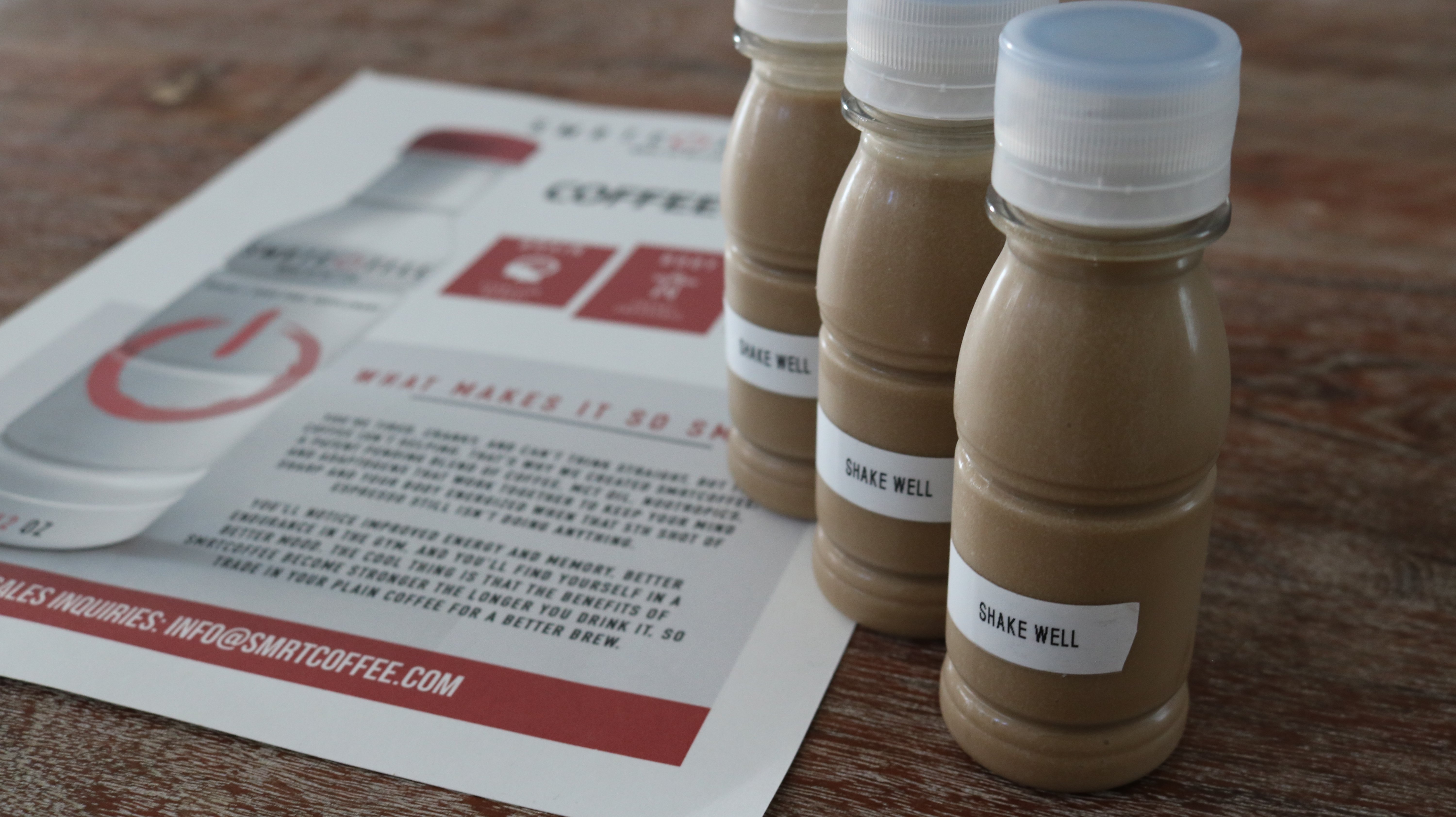
Now here's a real option. Developed by startup SMRTco, SMRTCoffee is a brilliant take on the ready-to-drink coffee market! (Note: These images are all beta test bottles)
At your local coffee shop, if you want added fat, you'll need to ask for a hodge-podge of coffee, cream, and possibly even a pad of butter (ugh no thanks!!). Your local supplement store has some cold low-carb beverages in the fridge, but there's no added fats or focus ingredients and they're loaded with artificial colors and sweeteners.
And at the gas station or convenience stores, there's plenty of ready-to-drink bottled sugar bombs disguised as coffee, but literally nothing marketed to those of us who see through that blood sugar trap. Even if you pour your own cup of joe, their coffee creamers are nothing but liver-toxic high fructose corn syrup!
Guess we're having black coffee and bacon jerky once again… or we're stuck bringing Trader Joe's coconut oil packets everywhere. And we're still not getting any cognition or anti-anxiety benefits available to supplement users out there. What a sad mess.
Not so fast! Meet SMRTCoffee and Wake Up Better
Realizing this growing market segment has been long underserved, a young startup out of New Jersey named SMRTco decided to do something about it. They created SMRTCoffee, a ready-to-drink coffee catered to the low-carb crowd... with added focus and stress-relief ingredients!
The product is coming in early 2019, but I had a chance to get a pre-release beta sampling and learn a bit about the ingredients. To say I'm excited is an understatement - we're dealing with three of my favorite things that have never been put together:
- Energy and longevity from coffee
- A blood-sugar-friendly higher-fat, low-carb profile
- Added nootropics and adaptogens for cognitive support!
Before we head into the ingredients and their benefits, take a look at my beta tasting video!
SMRTco – Deals and Price Drop Alerts
Get Price Alerts
No spam, no scams.
Disclosure: PricePlow relies on pricing from stores with which we have a business relationship. We work hard to keep pricing current, but you may find a better offer.
Posts are sponsored in part by the retailers and/or brands listed on this page.
SMRTCoffee's Ingredients
While we don't have a full label just yet (we'll update this post when it's out), we've been told that everything listed below is at a clinical dose. In order to make that work, some patent-pending technologies were used to get the nootropics to mix and taste good, so we're excited to learn more about those.
Let's start with the star of the show:
-
Coffee
We don't have the full dosing, but SMRTco claims the ingredients are efficacious. The list is at the bottom of this image.
Coffee is nothing new to anyone reading this, but let's talk about why you should never be ashamed of it!
There are several studies showing major benefits to coffee. Its consumption reduces blood sugar and body composition,[1] and it helps fight metabolic syndrome and diabetes.[2-8]
Even better, coffee-drinkers live longer (all other things considered equal).[9] Many of the studies cited above discuss the benefits of the polyphenols inside, and we know it's not just the caffeine, since drinking decaf even has some of the above benefits. For whatever reason, coffee-drinkers are simply “better-protected” against the effects of their poor diets.
Coffee vs. Energy Drinks: Improved Genetic Function
There's simply something extremely special about coffee, and the effects do not seem to translate to caffeinated energy drinks.
When looking at telomeres (the nucleoproteins that protect the ends of your chromosomes), shorter lengths indicate more aging and negative health,[10] and an increased risk of early death.[11] If you're thinking that longer telomeres is a good thing, you'd be right.
It turns out that coffee drinkers have longer telomeres, and it increases as their consumption increases. But you can't say the same for other types of caffeine drinkers, whose telomeres are shortened![12]
There indeed is something special about coffee, so don't feel ashamed about getting your fix!
Yet there's room for improvement
But at the same time... we can do better! The energy-positive effects of coffee eventually wear off due to tolerance, to the point where many of us either need more to get the same effect or simply need it just to feel "normal". And as we dose more, the anxiety increases and cognition benefits then decrease.
SMRTco decided to flip that script with SMRTcoffee.It's time to flip the
-
MCT Oil
For fat-adapted individuals, MCTs get converted to ketone bodies for energy -- nearly instantly. For everyone else, there's still health benefits! Image Courtesy Nutrition Review
Short for medium-chain triglycerides, MCTs / MCT oil is the added fat source in SMRTcoffee, and it's no stranger to the low-carb world, who've collectively turned on to the benefits of this fast-acting, coconut-derived fat.
MCTs provide three primary benefits to all dieters, namely that they can
- Increase metabolic rate and energy expenditure[13,14]
- Decrease fat mass[15]
- Increase fat oxidation[16]
- Improved insulin sensitivity and lipid profile[17]
But for low-carb / high-fat dieters, there's an even more powerful benefit: ketone body generation![15]
Ketone bodies are generated when we burn our fat for fuel (via the process of beta-oxidation), but sometimes we need added energy -- we're not fasting 24/7, after all. The fastest way to get that energy in the form of ketones is from MCT, due to the fact that the shorter chained fatty acids of the bunch can even skip the liver altogether, making for nearly instant energy for the mitochondria!
Long story short, MCT is a powerhouse that low-carb dieters love to utilize for energy, but it's something you're just not going to find in any of those other drinks on the shelves. SMRTcoffee changes that.
Now it's time to get focused:
-
Bacopa Monnieri
Bacopa Monnieri is one of our favorite anti-anxiety, pro-cognition nootropic ingredients, but bacopa in a drink?! We've never seen it in this form factor before - and that's for a reason - it doesn't mix well!
SMRTco fixed that problem, making an ultra-fine bacopa powder that mixes and suspends well in liquid, so now you can get one of the coolest herbs out there on the go!
Bacopa's nootropic and anxiolytic (stress-relieving) properties steem from its ability to promote improved neural communication, and it can even enhance the release of certain neurotransmitters. Of those include acetylcholine, dopamine, GABA, and serotonin,[18,19] making for a nice laundry list of our favorite feel-good brain compounds.
By improving synaptic communication, bacopa enhances memory, cognition, and learning - especially while under stress.[20,22] But even better, it's used as an adaptogen, helping to reduce stress and decrease cortisol![23,24] Through similar mechanisms, it helps reduce symptoms of anxiety as well.
On top of all of that, bacopa has been used to combat neuroinflammation,[25] repair damaged neurons,[26] and even has some antioxidant effects.[27]
Even crazier -- bacopa can remove aluminum in the cerebral cortex,[28] which is of great interest to those of us tired of seeing aluminum everywhere.
Best of all? The ingredient simply feels fantastic. We downright love this stuff at PricePlow, if you couldn't tell, and your average coffee drinker has no clue what they're about to experience in SMRTcoffee!
-
Phosphatidylserine
PS does more than just enhance cognitive function. Here's a simple chart showing that golfers hit balls better with higher doses of PS!
Often abbreviated as "PS", Phosphatidylserine is a naturally-occurring fat-soluble amino acid found in the brain. When you add more, you get more in the way of cognition and mood, but also athletic performance!
This is yet another supplement that helps mitigate chronic stress and the negative health impacts it brings (including high cortisol levels).[33] For those of us who are not stressed but simply looking for improved cognition and memory, we get that as well,[34-36] although it does depend on dose, which we don't know yet.
Another benefit of PS consumption could be improved exercise endurance for athletes (in terms of exercise time to exhaustion)[43] and less muscle soreness, which is exciting for those who hit the gym after their shot of coffee.
Meanwhile, like Ginkgo Biloba discussed below, phosphatidylserine helps slow cognitive decline in the elderly[37] - but no reason not to start that right now!
Due to its fatty nature, it often needs to be bound to silica so that it's not a mess in powdered or capsule-based supplements. Not a problem here in a liquid - we simply need some emulsification help for this and the MCT!
-
Ginkgo Biloba
Many people know of Ginkgo Biloba because it's long been marketed as a memory-boosting compound. The research is a bit mixed, but it seems to depend on dosage - and other ingredients it's mixed with.
Several studies have found that it improves cognitive function[29] and is useful for relieving symptoms of certain neurodegenerative conditions.[30,31] However, for healthy individuals, the improved memory effects still work well,[32] although most research is done on preventing cognitive decline.
Gingko also has some great effects such as improving sleep quality, increasing ocular blood flow, and simply improving overall well-being.
Synergistic with Ginseng!
It's important to note that some of the most successful research on ginkgo occurred when it was combined with Panax ginseng, as they work together to help improve quality of memory and recall -- greater than each individually![44-47] So guess what we have next:
-
Panax Ginseng
Ginseng is an herb used quite a bit in Asian cultures for a myriad of reasons.
In the West, we typically like it for its adaptogenic effects -- it helps reduce fatigue, induce calm, elevate mood, and even increase reaction time.
heavily used in various Asian cultures for the treatment and prevention of various diseases. Research into the plant shows its particularly effective for reducing fatigue, inducing calmness, elevating mood, and even increasing reaction time.[38,39]
One thing not typically mentioned, however, is that it can also regulate blood sugar levels and reduce appetite[40] - right in line with the community looking for SMRTcoffee!
While bacopa is still our favorite feel-good ingredient here, ginseng definitely helps bring up the rear, rounding out the profile and synergizing with ginkgo biloba,[44-47] as discussed above.
-
Polygala Tenuifolia
A newcomer ingredient to the PricePlow Blog here, polygala tenuifolia is a root used in traditional Chinese medicine that helps provide some cognitive benefits and help prevent cognitive degradation.
Polygala's effects are very interesting, as research shows it helps with spatial awareness and organization! Some of you may be looking at your cluttered desk right now, wondering if that could be for you, and for our biggest nootropic fans, it could make SMRTcoffee worth trying all on its own.
My review of SMRTCoffee is above, and it does not taste "herby" at all, despite the nootropic / adaptogenic herbs inside!
The "spatial awareness" benefits helped healthy middle-aged adults increase immediate recall and reduce working memory errors.[41]
Like some other popular cognition-supporting ingredients, this one helps increase compounds that help the brain and nerves grow, like nerve growth factor (NGF) and brain-derived neurotrophic factor (BDNF).[42]
In addition, rats who are given the herb have antidepressant effects, but that needs further research in humans.
We obviously want to see more about this one, but given the profile here, SMRTcoffee is wisely hitting nearly every pro-cognitive angle on top of the coffee and caffeine!
Now if that isn't a beautiful profile -- especially for a ready-to-drink bottle -- we don't know what is! Between the focus, the energy, the mood, and the endurance support, we can't ask for much more in a profile - we're just excited to see the final label. SMRTco did say that everything inside had clinical research backed levels though!
No added sweeteners!
SMRTcoffee was designed for those who want an artisanal style coffee, like something you'd get from a great coffee shop. This means no added sweeteners!
All that's been added is an emulsifier for the MCT that helps everything stay blended together - including the ultra-fine bacopa monnieri that we're so excited about!
Our take is that a sweetened version should eventually become an option if there are enough requests for it, but if you must have sweeteners, you can always add your own flavored stevia in the meantime.
Conclusion: A solid idea we hope to see executed properly
Truth be told, a high-fat / low-carb coffee on its own is something the growing market could utilize, even if it just takes up a single row in the refrigerator section.
But adding all of these anti-anxiety, pro-mood, focus-driving nootropics and adaptogens to the profile? Now we're really talking! If everything is dosed well, this will have your standard coffee drinker - and even your standard LCHF dieter - wondering how something can feel so good. And that's the beauty of these ingredients that are so often overlooked by "normal" coffee and energy drink fans.
SMRTco is seriously on to something here, and we hope it works out well, because there's a lot more that can be done for this market, and we're only scratching the surface on some of the things they should be able to do!
You can sign up for SMRTco news alerts below to get contacted when it's ready to go!
SMRTco – Deals and Price Drop Alerts
Get Price Alerts
No spam, no scams.
Disclosure: PricePlow relies on pricing from stores with which we have a business relationship. We work hard to keep pricing current, but you may find a better offer.
Posts are sponsored in part by the retailers and/or brands listed on this page.

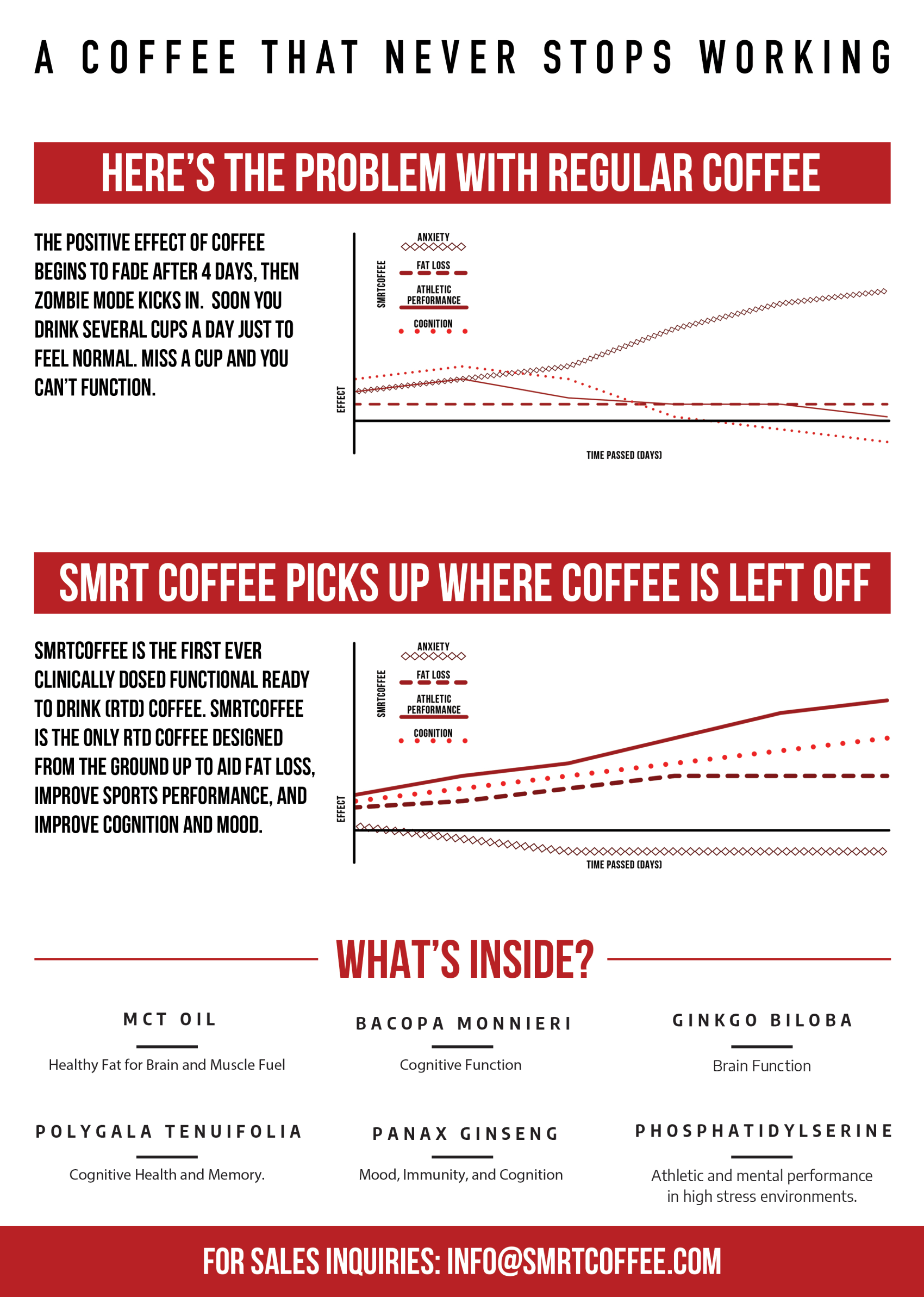

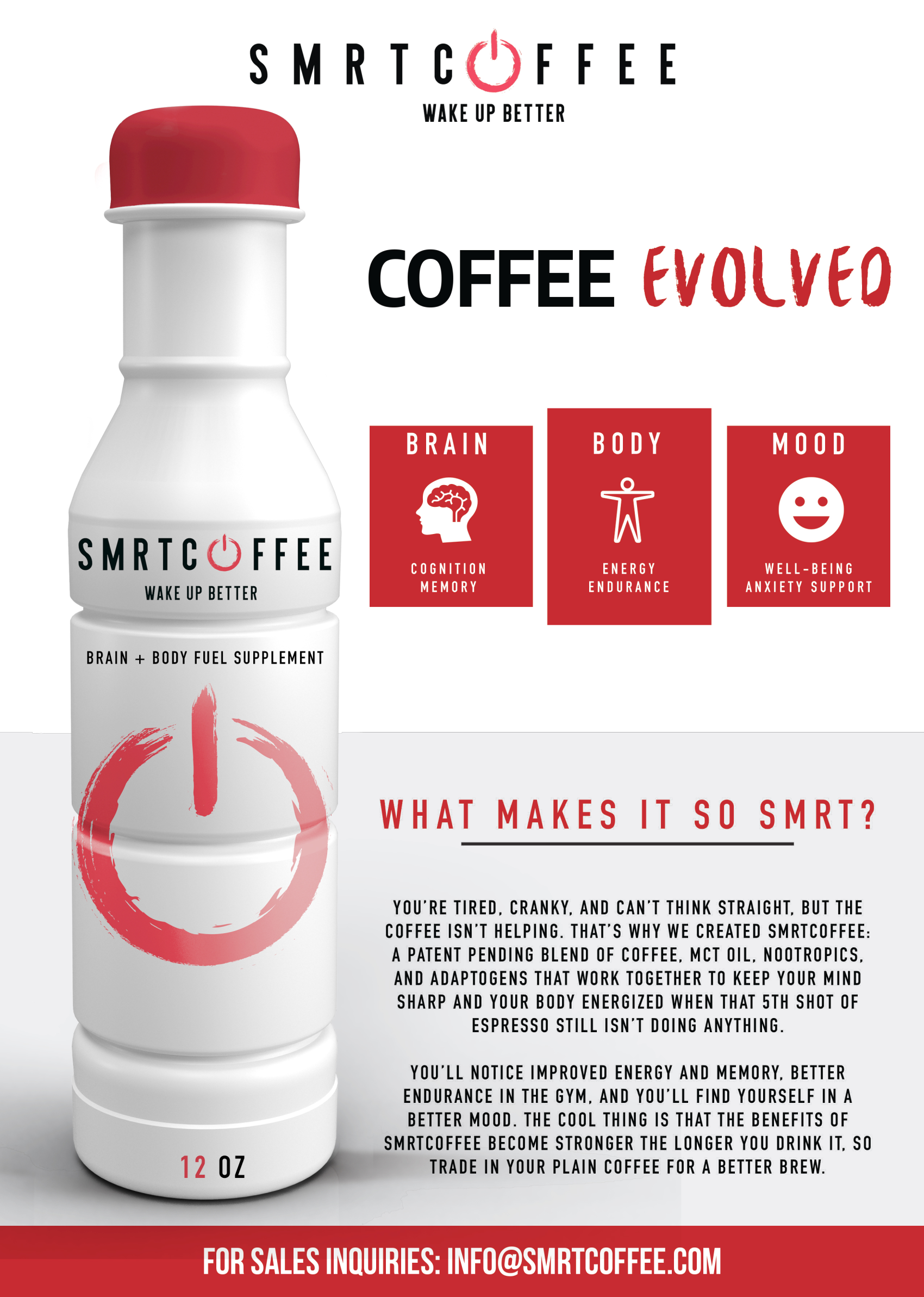

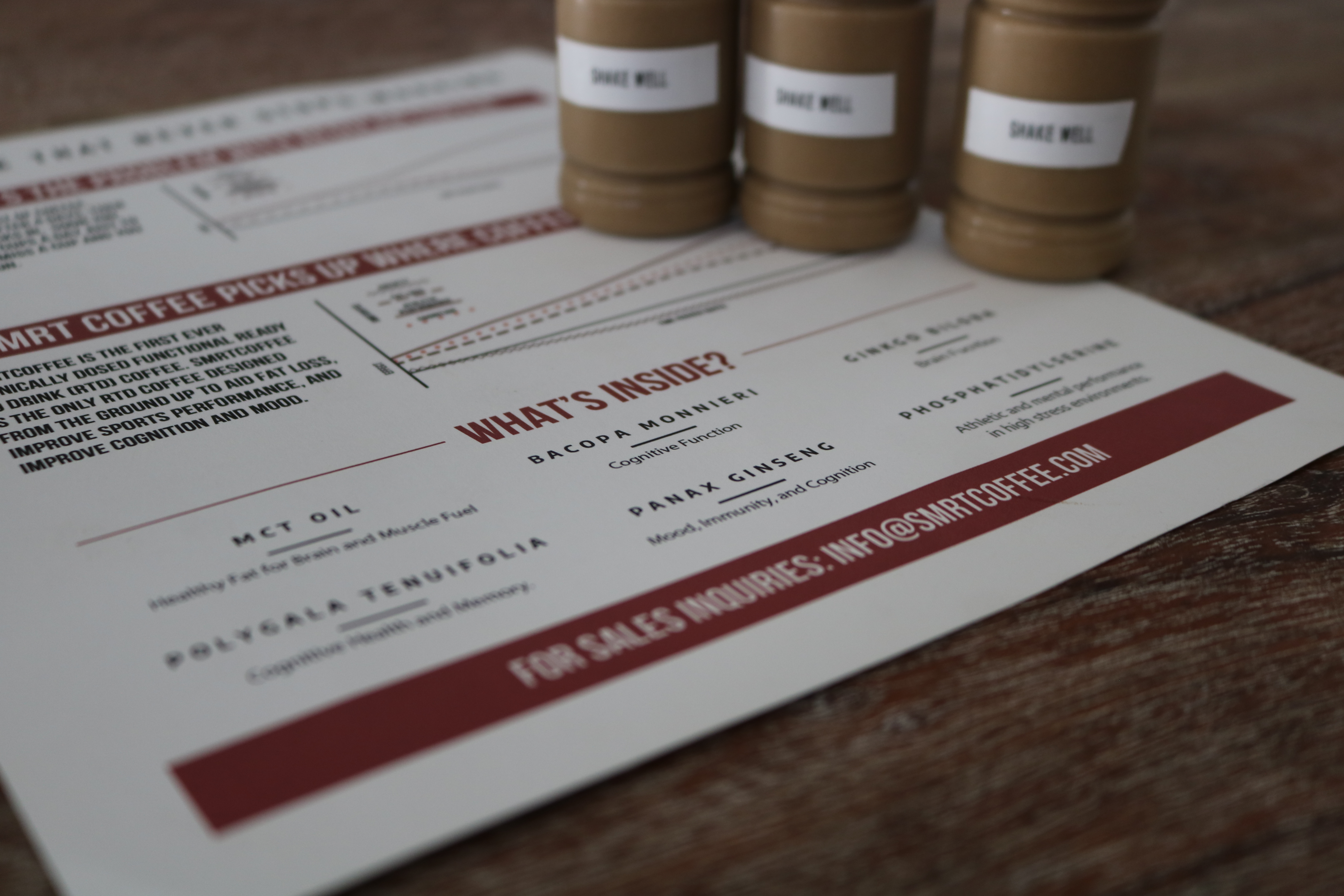
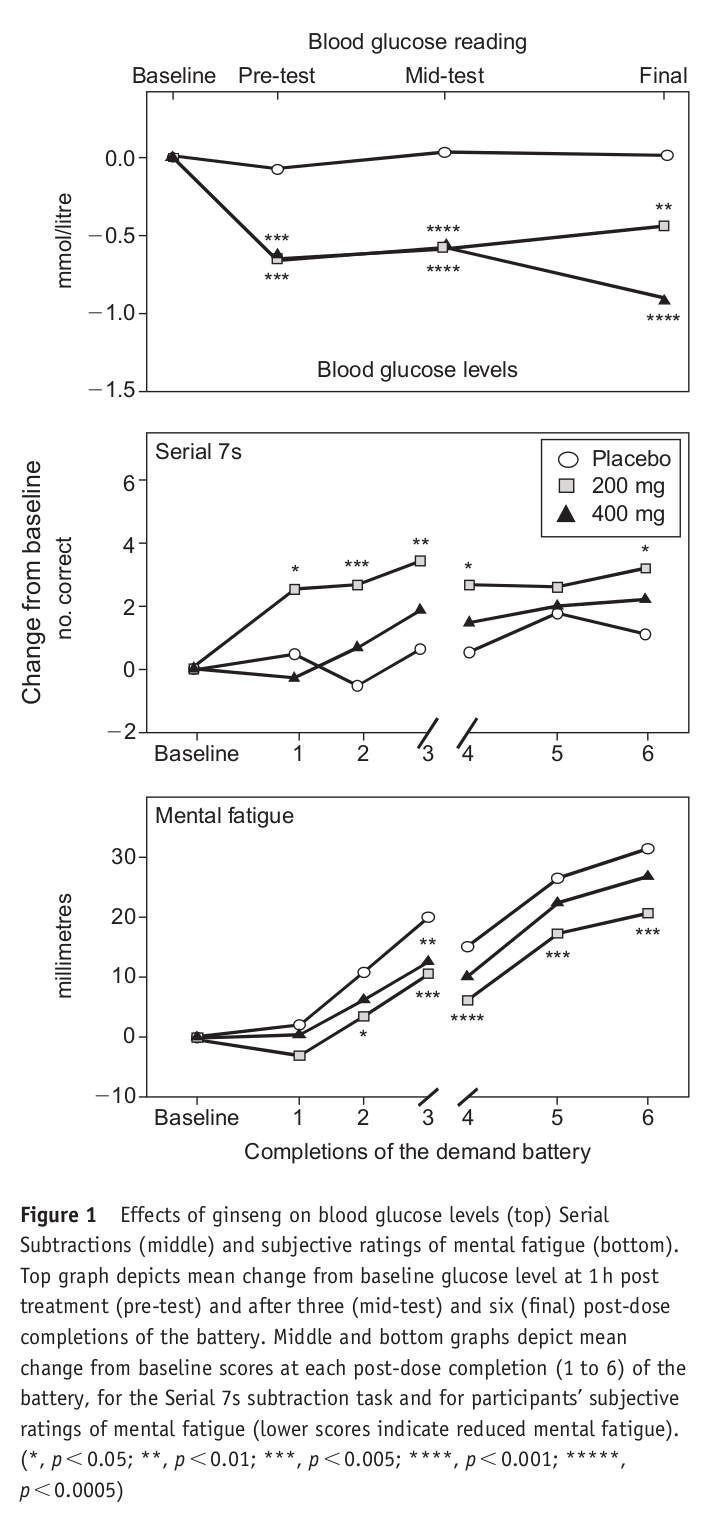
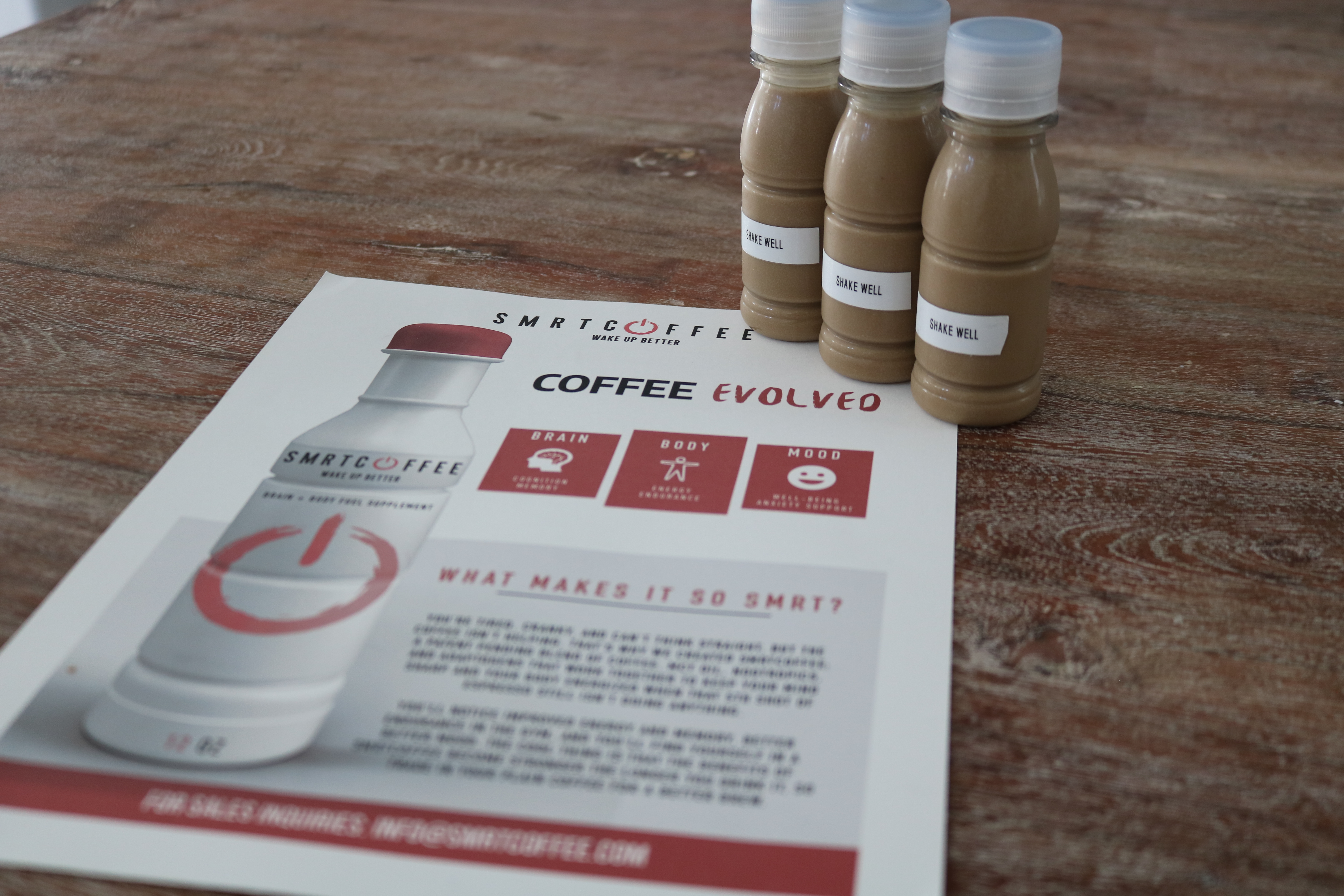



Comments and Discussion (Powered by the PricePlow Forum)